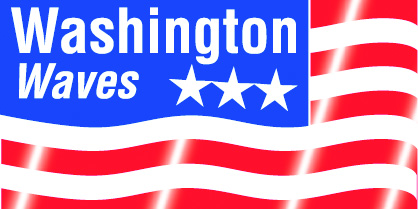Washington, D.C.—With the threat of a government shutdown gone, the big question for many focused on where President Donald Trump will get the billions Congress denied him to build the long-promised wall on the southern border.
Trump himself provided a major clue when he mentioned funding under the control of military generals.
“They think this is far more important than what they were going to use it for,” he said.
Critics believe that could mean Army Corps of Engineers civil works funding.
According to the White House, the Corps, the Department of Defense and the Department of Homeland Security began working on a work plan for the remainder of fiscal year 2019 and beyond.
A senior administration official said the White House is working closely with DOD to identify funding within these programs, but there is no list of planned military construction projects that might be affected at this time. Criteria will focus on lower priority, un-awarded projects—“we’re committed to not harming lethality or readiness,” the official said.
The bill signed by the president to avoid a shutdown provided $1.375 billion for 55 miles of border barrier in what the White House described as “highly dangerous and drug smuggling areas in the Rio Grande Valley” and up to $8.1 billion has been identified that will be available from various sources to build a border wall under the emergency declaration.
That funding will be used sequentially as needed, the White House explained.
Even before Trump declared the national emergency, Sen. Tom Udall (D-N.M.) led a group of Democratic senators in introducing a bill to block Trump from tapping the Department of Defense, including the Corps, for wall funding.
Rep. John Moolenaar (R-Mich.), responding to concerns that Soo Locks funding could be diverted, pointed to a provision in current law that already protects funding for that project from such action.
On the House side, Speaker Nancy Pelosi (D-Calif.) circulated a copy of a one-page bill by Rep. Joaquin Castro (D-Texas) to terminate the president’s emergency declaration.
But both Castro and Udall’s bills face difficult odds in the Republican-controlled Senate.
Away from Congress, more than a dozen states have filed a lawsuit against Trump’s action, and the president conceded he could go through a couple of losses in lower courts before beating back such challenges in the nation’s highest court.
“We’ll win in the Supreme Court,” he predicted.
TSAC Meeting Rescheduled
Dates and location for meetings scheduled for the Towing Safety Advisory Committee and its subcommittees have been changed from February to March 12–13 in Miami, Fla.
All meetings will be held at the Double Tree by Hilton Hotel Miami Airport and Convention Center 711 NW 72nd Ave., Miami, Fla. 33126.
Subcommittees are to meet at 8 a.m. March 12, and the full committee is to meet at 8 a.m. March 13.
For additional information, contact Douglas Scheffler at 202-372-1087.
CTAC To Meet
The Chemical Transportation Advisory Committee and its subcommittee are scheduled to meet March 20–21 in Houston, Texas.
Open to the public, the meetings will be held at U.S. Coast Guard Sector Houston-Galveston, 13411 Hilliard St., Houston, Texas 77034.
The subcommittee is to meet at 9 a.m. March 20 and the full committee at 9 a.m. March 21.
To ensure comments are received before the meetings, they must be submitted by March 6.
To ensure your comments are received by committee members before the meetings, submit them no later than March 6.
For additional information, contact Lt. Cmdr. Julie Blanchfield at 202-372-1419,
WOTUS Comment Period
Two lead agencies kicked off a much-anticipated 60-day public comment period on their effort to replace the controversial Waters of the United States (WOTUS) rule of 2015 with one they say will provide a clear, implementable definition of which waters will be federally protected under the Clean Water Act and which will be protected by states or tribes.
Comments must be received by April 15, states the Federal Register notice posted by the U.S. Environmental Protection Agency and the Army Corps of Engineers, the two agencies that launched the effort against the Obama-era rule just weeks after President Donald Trump took office in 2017.
Interest from both supporters and opponents of the administration’s effort is expected to trigger a large number of comments.
An earlier request on the WOTUS effort generated a million comments, then-EPA Administrator Scott Pruitt said.
In their latest notice, the two agencies explained the proposal is the second step in a comprehensive, two-step process intended to review and revise the definition of ‘‘Waters of the United States’’ consistent with the executive order Trump signed on February 28, 2017, entitled ‘‘Restoring the Rule of Law, Federalism, and Economic Growth by Reviewing the ‘Waters of the United States’ Rule.’’
For additional information, contact Michael McDavit with EPA at 202-566-2428 or Jennifer Moyer with the Corps at 202-761-5903.
Acting EPA Administrator Andrew Wheeler recently told a Senate panel the agency’s goal is to have the rulemaking completed by the end of this year.
Polar Security Cutter
Key House Democrats applauded approval of funding for the construction of the first Coast Guard Polar Security Cutter (PSC).
Rep. Peter DeFazio (D-Ore.), chairman of the House Transportation and Infrastructure Committee, said polar icebreakers enable the U.S. to maintain defense readiness, support the enforcement of treaties and other laws needed to safeguard both industry and the environment, and protect U.S. sovereign interests in the High North.
Rep. Sean Patrick Maloney (D-N.Y.), chairman of the Coast Guard and Maritime Transportation Subcommittee, spoke of national security, specifically the need to protect U.S. territorial sovereignty against Russian and Chinese encroachment and safeguard access to commerce.
The Consolidated Appropriations Act of 2019 provides $655 million for building the first PSC as well as $20 million for long lead-time materials for the second one.
Meanwhile, the Coast Guard announced the availability of the final Programmatic Environmental Impact Statement for the Polar Security Cutter Program’s design, build and operation of up to six PSCs.
A final decision on the proposal will not be made for a minimum of 30 days after the Environmental Protection Agency publishes its Notice of Availability of the final EIS in the Federal Register.
“The first of these new PSCs is expected to be delivered in 2023,” the Coast Guard stated in its Federal Register notice, adding its current two heavy icebreakers have exceeded their designed 30-year service life.
FMC Civil Penalties
The Federal Maritime Commission published its adjusted civil monetary penalties in the Federal Register on February 7.
Effective on the day of publication, the rule is applicable beginning on January 15.
A 2015 law requires agencies to adjust and publish their civil penalties based on changes in the consumer price index each year in order to improve their effectiveness and maintain their deterrent effect.
For additional information, contact Tyler Wood at 202-523-5740.




